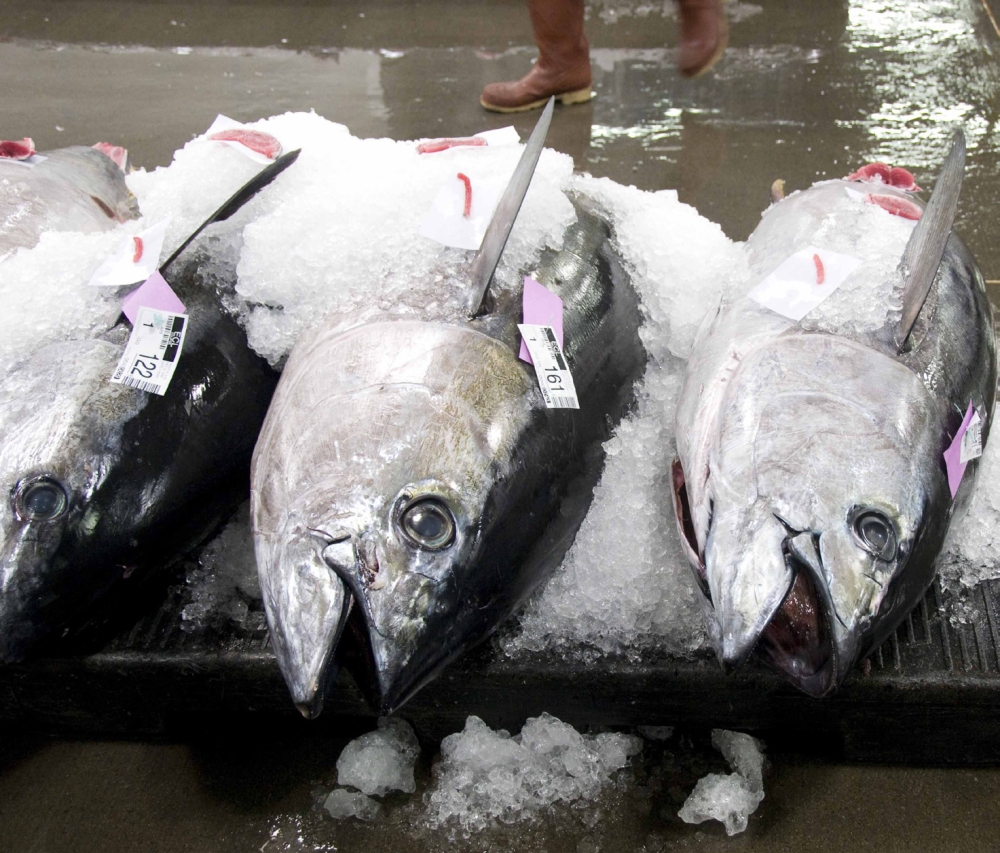
‘Worst-Case Scenario’ Plays Out: In April, we reported that fishing industry experts speculated the Hawai`i longline fleet might reach its annual catch quota for bigeye tuna in the Western and Central Pacific as early as June. Then, as we report in our July issue, the Pacific Islands Fisheries Science Center, which continually revises its forecasts, estimated that the quota would probably not be hit until August, but could be reached as early as July 22 in a “worst-case scenario.”
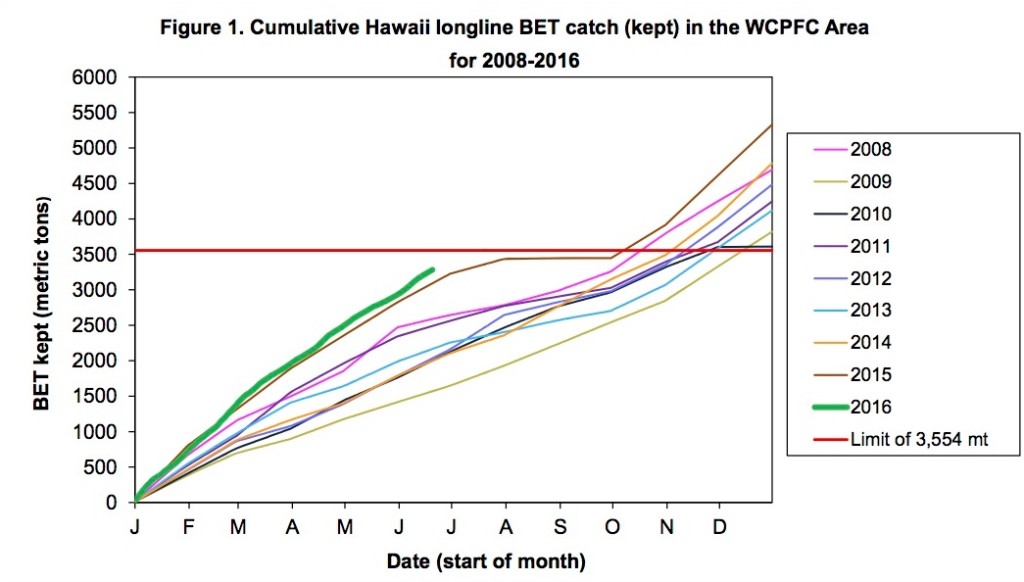
Sure enough, that’s the very date that the fishery in the Western and Central Pacific will close, according to NOAA Fisheries’ July 12 update of fish catches in the Pacific Islands region. As of that date, the fleet had caught at least 3,473 metric tons of bigeye in the Western and Central Pacific. That’s 98 percent of its quota of 3,554 metric tons set by the Western and Central Pacific Fisheries Commission. (See NOAA’s website, http://www.fpir.noaa.gov/SFD/SFD_regs_3.html, for details.)
Last year, when the Honolulu fleet hit its quota, it faced a shutdown of two months while the National Marine Fisheries Service published rules that allowed it to continue fishing under territorial allotments assigned to U.S. territories in the Pacific (Guam, American Samoa, and Commonwealth of the Northern Mariana Islands).
This year, NMFS was better prepared. On July 7, it published notice in the Federal Register of a rule that, first, assigns to each territory a 2,000 metric ton bigeye quota and, second, allows each territory to assign up to half its quota to Honolulu-based longline vessels whose owners participate in a “specified fishing agreement” – i.e., a deal worked out between the Hawai`i Longline Association and one or more territories that allows Hawai`i vessels to keep fishing in return for substantial payments to the territories’ fisheries conservation funds. Those funds, by the way, are managed by Wespac (the Western Pacific Fishery Management Council, based in Honolulu).
In the Eastern Pacific, bigeye catches by longline vessels longer than 24 meters were still well below the 500 metric ton quota set by the Inter-American Tropical Tuna Commission (IATTC) when they last submitted their logbooks to the science center. As of late June, the fishery had only caught 190 mt, or 38 percent of the quota. Even so, NMFS has announced that the Eastern Pacific longline fishery will close on July 25, just three days after the Western and Central Pacific closure.
According to the science center’s data, catches by large longliners this year have so far closely tracked last year’s trend, where bigeye landings in the Eastern Pacific jumped from about 200 mt to 500 mt between late June and early August. Fishery managers, expecting the same steep climb this year, have predicted the IATTC quota will be reached even sooner than it was last year. Once the quota is reached, vessels shorter than 24 meters — which make up the majority of the Hawai`i longline fleet — may continue fishing in the Eastern Pacific. “Whether they feel comfortable fishing there is another question,” says Chris Boggs, director of the science center’s Fisheries Research and Monitoring Division.


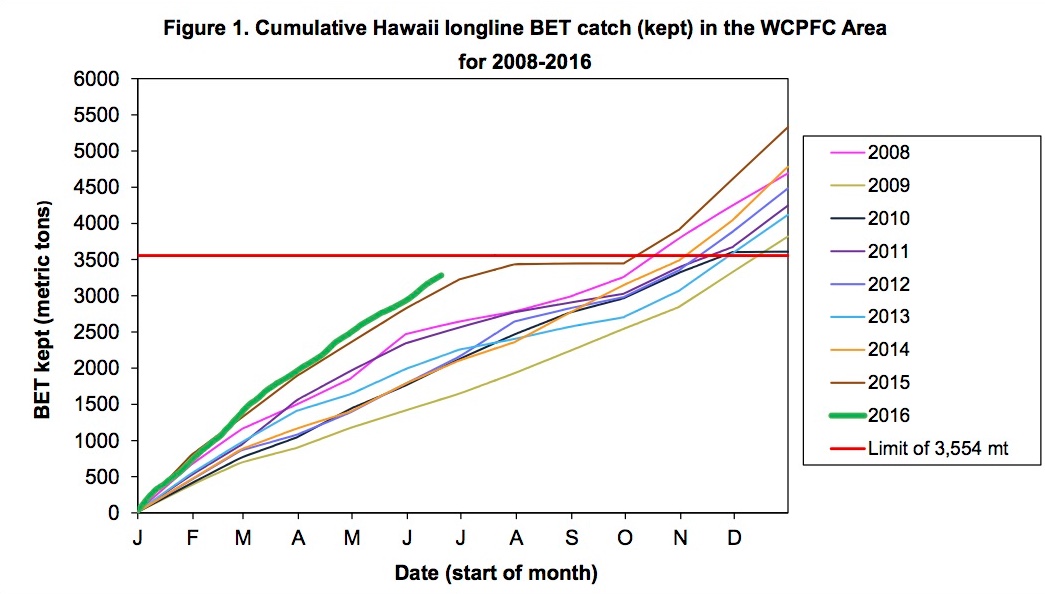
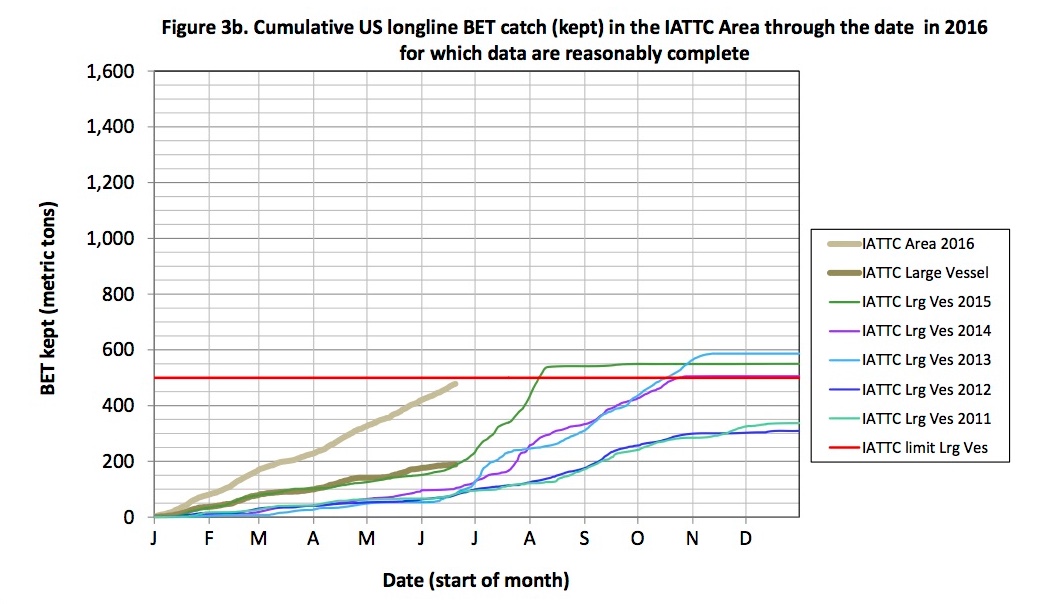
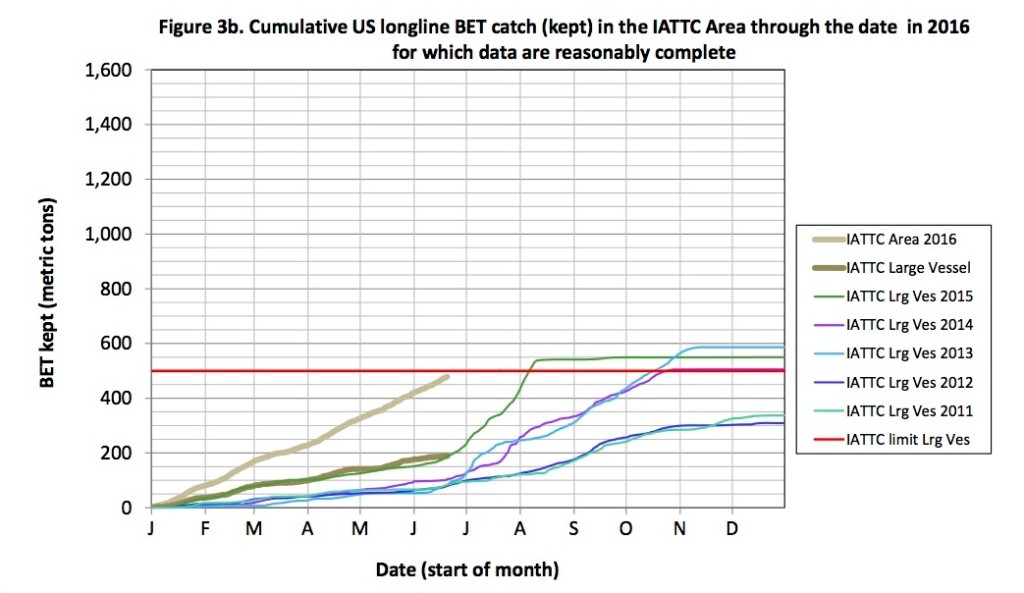
Leave a Reply